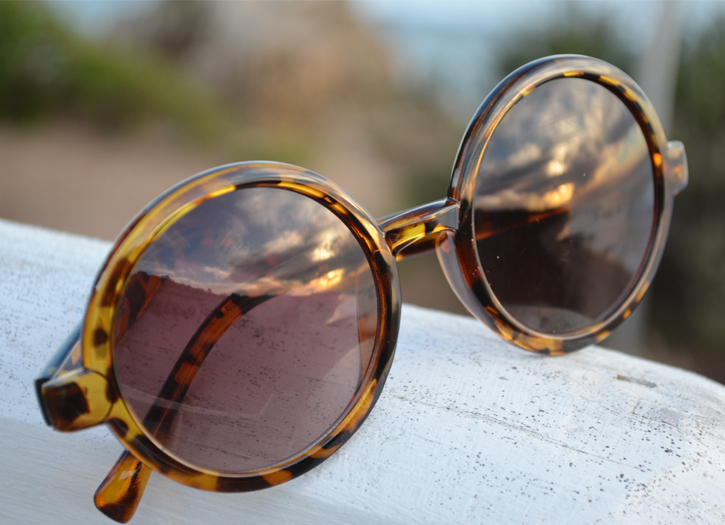Horn-rimmed glasses are a type of eyeglasses. Originally made out of either horn or tortoise shell, for most of their history they have actually been constructed out of thick plastics designed to imitate those materials. They are characterized by their bold appearance on the wearer’s face, in contrast to metal frames, which appear less pronounced.
Horn-rimmed glasses were one of the first styles of eyeglasses to become a popular fashion item, after comedian Harold Lloyd began wearing a round pair in his films. The glasses have enjoyed various periods of popularity throughout the 20th century, being considered especially fashionable in the 1920s–1930s and in the 1950s–1960s in particular, while ceding to rimless and wire framed glasses during the 1970s and 1990s–2000s. The style has brought a resurgence of popularity in the late 20th (1980s–1990s) and early 21st (2010s) centuries, with an emphasis on retro fashion.
Horn rim glasses were initially popularized by comedian Harold Lloyd after he wore them in his 1917 comedy short Over the Fence. Lloyd had risen to fame playing an eccentric named Lonesome Luke, characterized by an ostentatious appearance. In an effort to break away from the character and revitalize his career, Lloyd crafted a new character who would be Luke’s opposite and made distinct by a nondescript appearance.” Glasses wearing had long been stigmatized, with wearers stereotyped as physically weak intellectuals, members of the clergy, or simply elderly; President Theodore Roosevelt’s wearing of rimless eyeglasses had only recently begun to eliminate the stigma, albeit with glasses designed to minimize their appearance.
Ales around the world rose as the popular Lloyd’s appearance wearing glasses helped to dispel negative stereotypes of glasses wearers. When Lloyd ultimately broke the frames and attempted to order a new pair from the manufacturer, his check was returned along with an order of twenty frames and a note from the company thanking him for his endorsement. Explaining his reasons for the glasses, as well as their sartorial advantages, Lloyd said: “They make low-comedy clothes unnecessary, permit enough romantic appeal to catch the feminine eye, usually diverted from comedies, and they hold me down to no particular type or range of story.” Horn-rimmed glasses were popular in the 1920s but steadily lost their appeal as sturdier metal styles became more economic alternatives during the Depression.
A variant of horn-rimmed glasses, browline glasses, became one of the defining eyeglass styles of the 1940s and 1950s. Invented in 1947, the style combined the aesthetics of horn-rimmed glasses with the stability of metal frames by fitting prominent plastic “brows” over the tops of metal frames, creating a distinctive look that was also sturdier than solid plastic frames. Browlines quickly became popular in post-World War II America, and composed half of all eyeglass sales throughout the 1950s. Horn-rimmed glasses fell back out of fashion in the 1990s but returned to popularity with the rise of the emo and hipster subcultures in the early 2000s.







Add Comment
You must be logged in to post a comment.